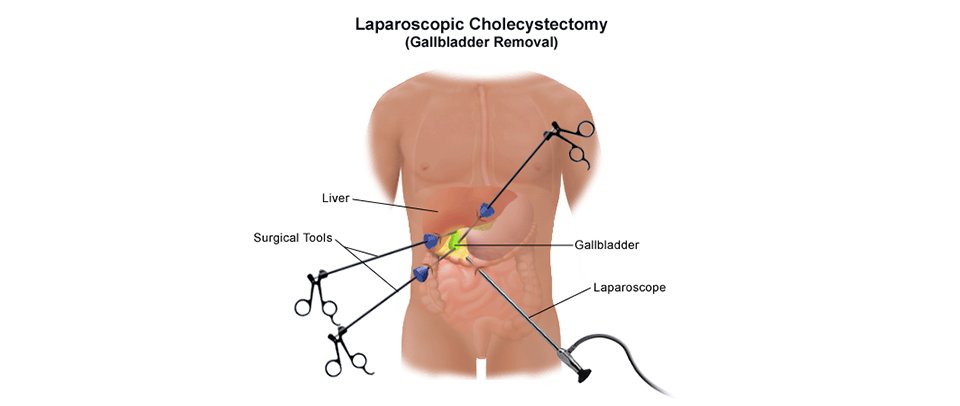What is Gallbladder Removal Surgery?
Gallbladder removal surgery is the process of removing the gallbladder, which is a pear-shaped organ located beneath your liver. It is otherwise called Cholecystectomy. The primary function of the gallbladder is to gather bile produced by your liver. Also, it releases bile for digestion. This surgery is required for people with gallbladder disorders.
Gallstones can create problems in your gallbladder and your overall biliary system. These problems are accountable for severe and painful inflammation of your gallbladder known as acute cholecystitis. The gallbladder problems include specific symptoms, including:
- Vomiting and nausea
- Sharp pain in the abdomen
- Fever
- Indigestion

Types of Gallbladder Removal surgery
Laparoscopic Cholecystectomy
Also called ‘Keyhole surgery’, it is performed on patients who suit the criteria and is performed with general anaesthesia. The abdomen of patient is cleaned using an antiseptic solution. Rather than making a large incision, this surgery involves creating four small cuts in your abdomen. A ‘laparoscope’ is a miniature tube fixed to the camera. It is used to look at the inner portion of your abdomen. Later the infected portion is removed.
Open Cholecystectomy
It is done by using general anaesthesia that renders you unconscious. Once the anaesthesia starts showing effects, your abdomen is thoroughly cleaned using an antiseptic solution. It will avoid the infection. This surgery creates about four to six inches of incision in your right top portion of the abdomen, to provide access to the gall bladder. Then, the gallbladder is removed. Finally, the incision is sutured and closed. It is safe because it carries fewer possibilities of risks.

